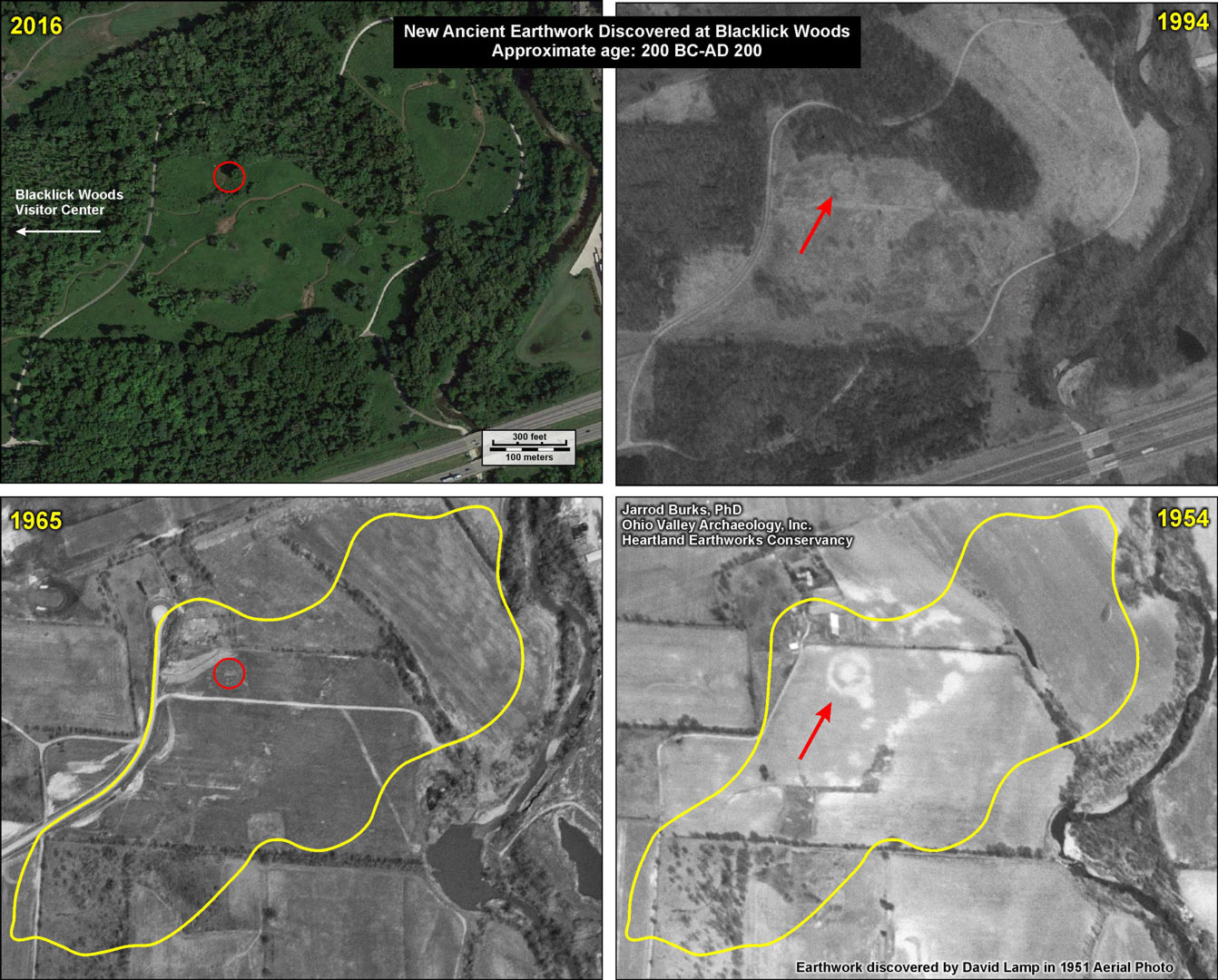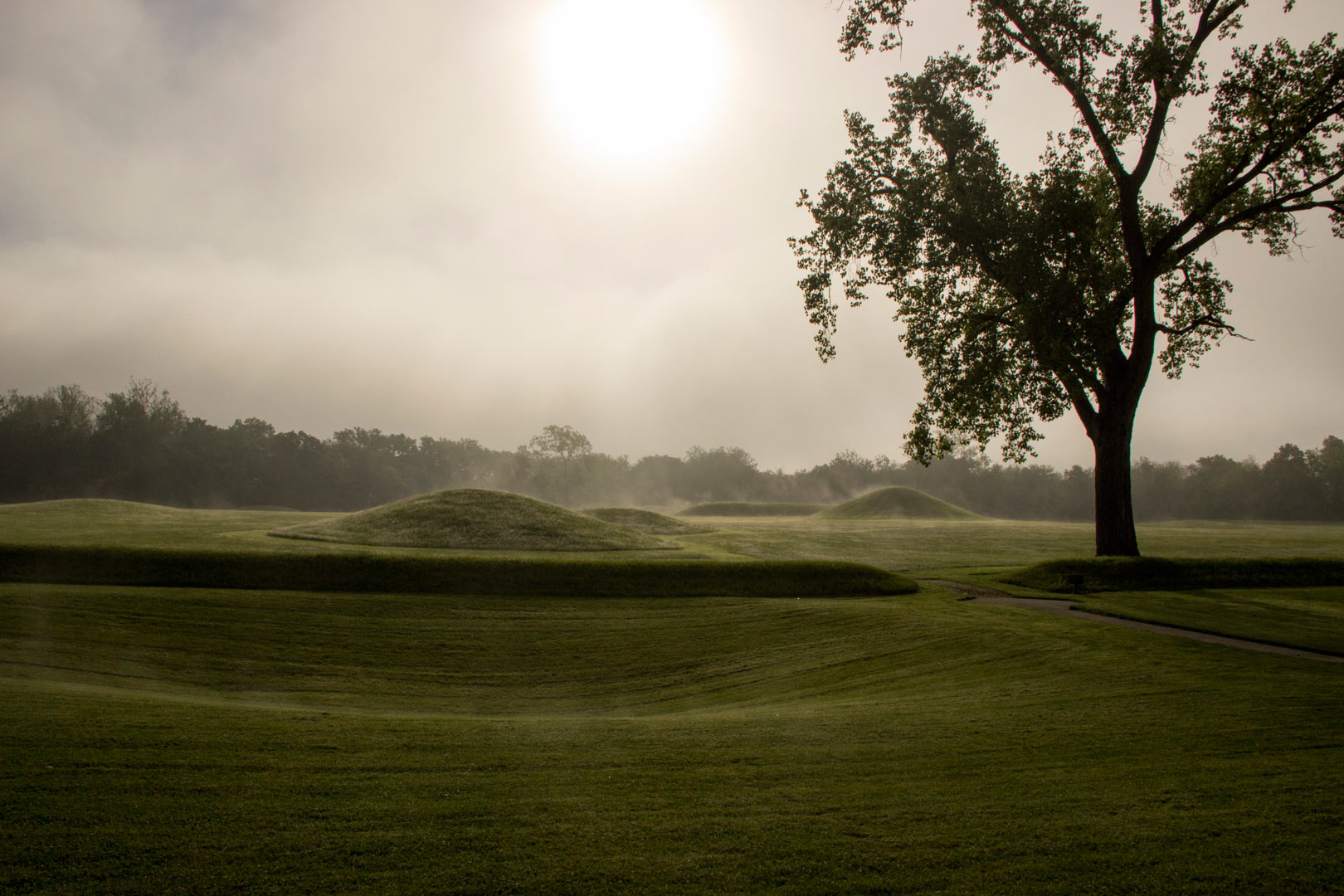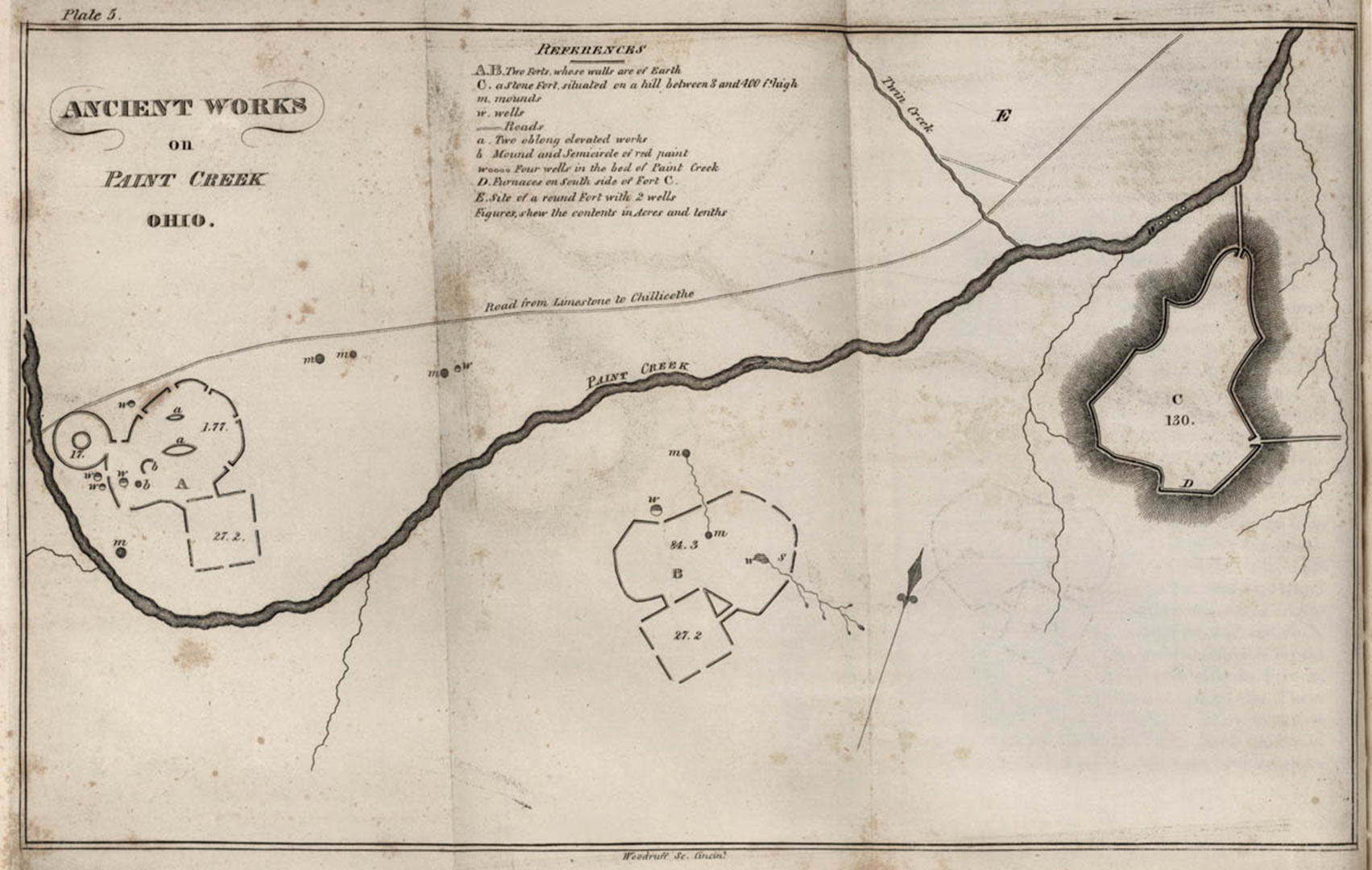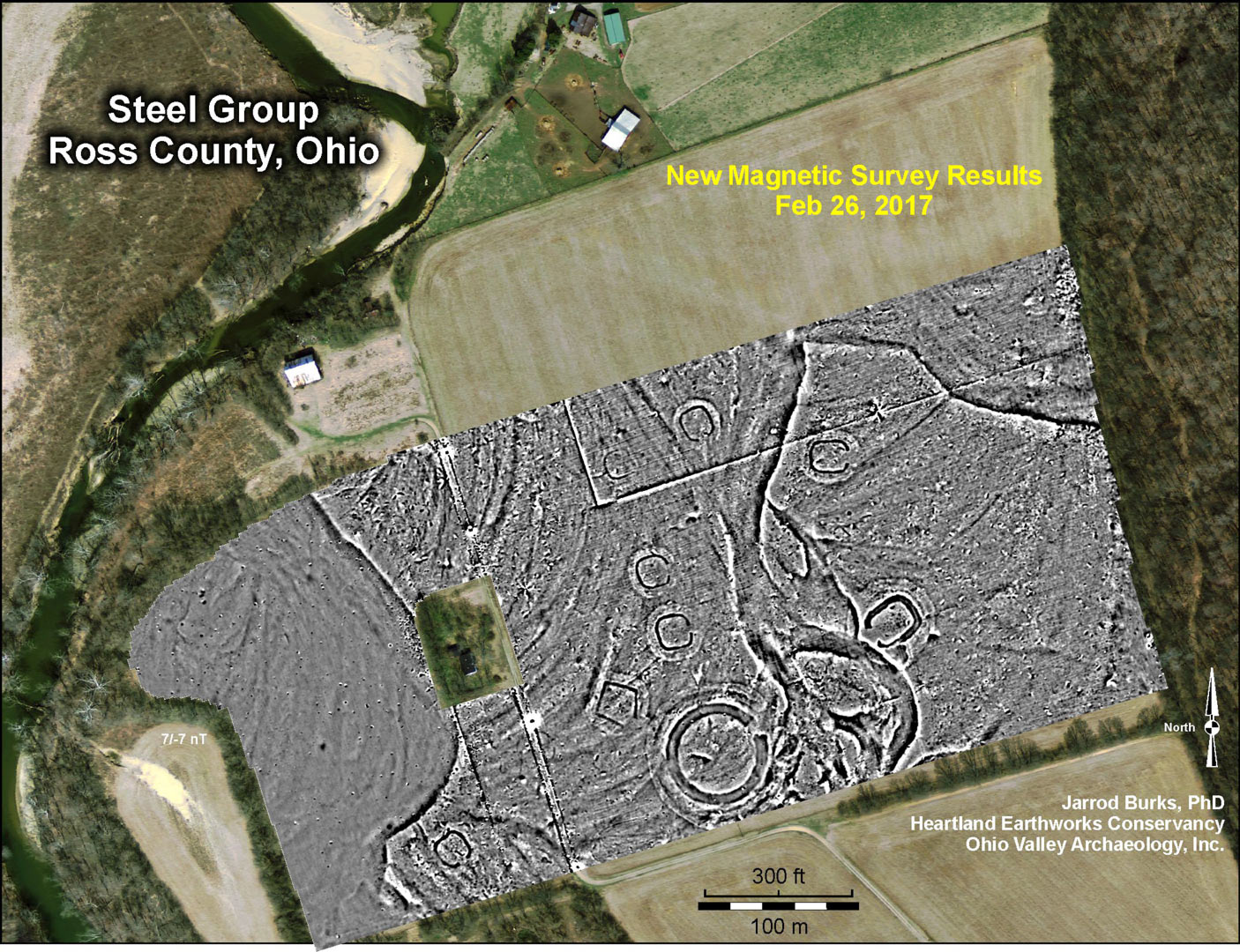
UPDATE, SEPT 22, 2017
On Sunday Sept 24, 2017, archaeologist Jared Burks will conduct a magnetic survey of the recently discovered earthwork at Blacklick Woods, using ground penetrating radar equipment to read the different layers of substrate in the soil and so produce clearer mapping of the earthwork. We invite you to meet with us at the nature center at noon and we’ll take a walk out to see the survey in action and hope to speak with Dr Burks about the process and the earthwork itself.
ORIGINAL BLOG POST
A prehistoric circular earthwork has been discovered at Blacklick Woods Metro Park, by a review of old aerial maps. This method of earthwork discovery has become more and more common in recent years.
The USDA keeps aerial maps of Ohio, some going back to the 1930s, when the earthworks may have been better defined. Although thousands of earthworks have been documented in Ohio over the years, circle earthworks, like the one at Blacklick Woods, are far less common, numbering in the hundreds.
Mounds and earthworks first started showing up in Ohio around 1100 BCE, during a time archeologists call the Early Woodland Period. Early mounds were used as cemeteries and were built in a variety of sizes. The construction and contents of the mounds are different throughout Ohio. Some contain shell beads, copper sculptures, pipes, spear points and knives, while others contain just the human remains.

The mounds were usually reserved for the burial of someone notable, perhaps a leader, warrior, shaman, artisan, or family of one of these.
Earthworks, like earthen walls or the circle at Blacklick Woods, did not contain burials. They sometimes surrounded burial mounds, and sometimes stood alone. Large earthworks found on hill tops may have been defensive structures, or surrounded small villages. Other earthworks may have been used for ceremony or as directional structures.
Because these early cultures were prehistoric, almost nothing was known about them when their mounds were discovered by some of the first European settlers in Ohio. Many mounds and earthworks were surveyed in the 1800s. The people who built them are known to us today as the Adena and Hopewell cultures.

In 1820, Caleb Atwater was the first to publish a book describing the earthworks in the Ohio River valley. Nearly 30 years later Edwin Hamilton Davis and Ephraim George Squier published their survey of “Ancient Monuments of the Mississippi.” The illustrations in these books are still valuable today. It is important that so many of the earthworks were recorded early on, as many fell victim to the plow when more people began moving into the Ohio river valley and agriculture expanded greatly. Plowing slowly flattened many earthworks, making them more difficult to locate.
As technology advances, we are finding new ways to investigate these prehistoric earthworks and mounds. Rather than archeologists using a shovel and trowel, there is now equipment available that can tell us a great deal about a site without even breaking ground. This is very important when researching these prehistoric cultures. It can help preserve clues into the hows and whys of these early people.

Magnetometers can be used to find cooking pits or middens, which give great insight into how locations were used. Electrical resistance meters can pick up on layers of compacted soil, as well as sand and gravel. Many earthworks were created with a very specific layering of these materials. Ground penetrating radar can help map earthworks, even in areas where they are no longer visible, by showing a profile of the layers under the surface.
To help us learn more about the circular earthwork at Blacklick Woods, archeologist Jerrod Burks is planning to do a magnetic survey of the location where the earthwork was found. This will help us better visualize our earthwork, as well as locate any others that may be within the park. Our first steps will be clearing the site to make it accessible for the archeologist. We look forward to sharing more information with you as we discover more about the Blacklick Woods earthwork.
KATIE LAMBERT
Blacklick Woods Naturalist
